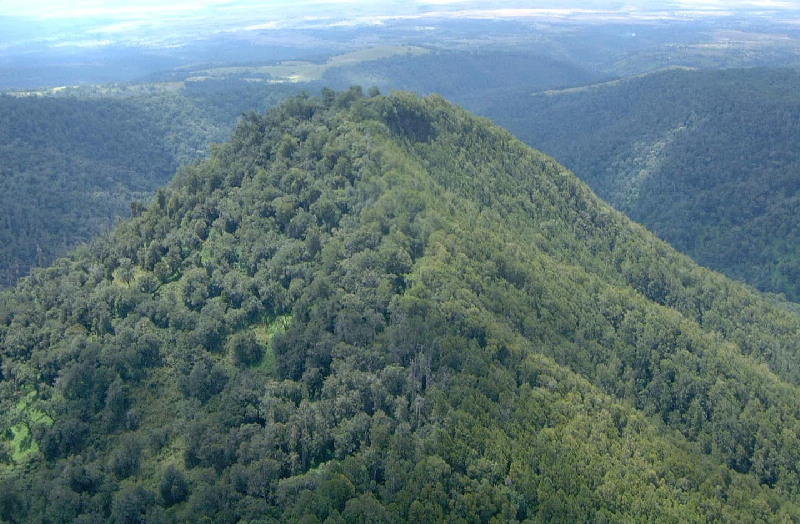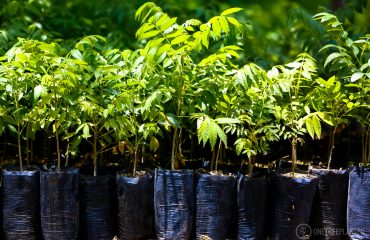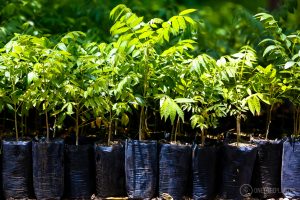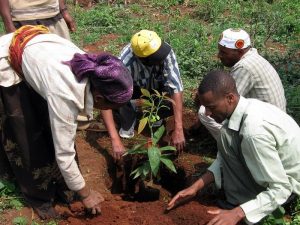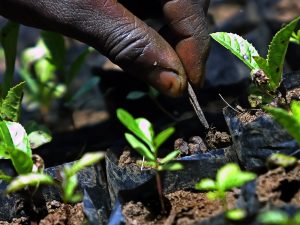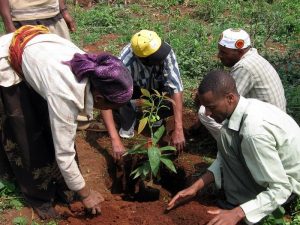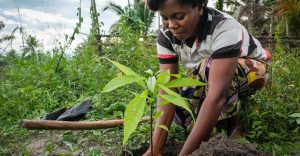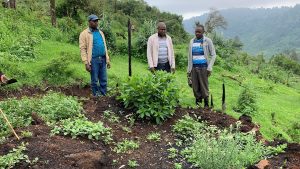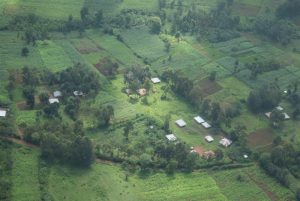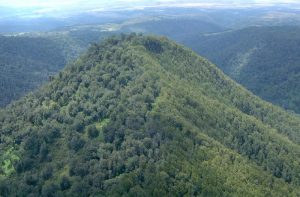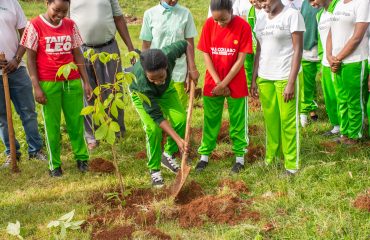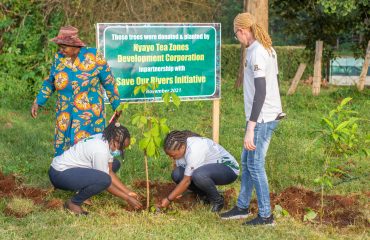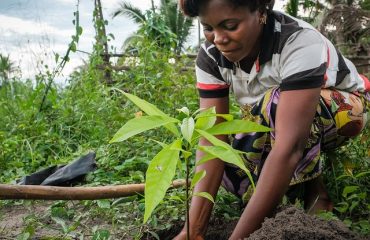Conservation
- The Challenge
- Strategy
- Activities
- Impact
- Gallery
Kenya’s forests are on a rapid decline with deforestation taking place at a rate of 0.3% each year due to pressure from increased population, wood fuels, building material and other land uses. Observations since 2015 indicate a decline in forest cover in the country by 25% (824,115 hectares) or a rate of 33,000ha forest loss per year. Put in context this is same as losing forest cover equaling the size of 100 football pitches or over 200,000 tree stamps daily.
Verifiably NTZDC works with rural communities who arguably have a strong attachment to the forest as a means for their survival. As the Corporation moves in to protecting the gazetted forest, the government utility navigated this minefield through team effort. The organization has largely been supported by various internal and external stakeholders that include; the government through the parent ministry which has allowed for the expansion from 300kms stretch to the current 939kms stretch.
a) establish, manage and develop tea and fuel wood plantations and indigenous trees
b) establish and manage nurseries for propagation of tea and tree seedlings
c) establish, manage and maintain tea processing factories and process tea.
d) construct and maintain rural access roads, offices and green leaf collection centres
e) transport, lease, sell or market in Kenya or outside Kenya any tea, wood or other products produced or processed by the Corporation or its agents.
Forest Conservation is the main purpose for the creation and establishment of Nyayo Tea Zones Development Corporation in 1986 . The corporation mandated to ensure that gazetted forests are protected from encroachment and the natural ecosystem is maintained. The corporation has over the years implemented forest conservation strategies through the use of buffer zones (planting and maintaining of tea and trees) around the gazetted forests for the benefit and sustainability of future generations. Conservation of forests for Nyayo Tea Zones is not just planting trees and tea as a buffer, it also involves controlling deforestation – (i.e. loss of forest land and land designated for conservation). In addition to establishment of buffer zones, Nyayo Tea Zones Corporation also utilizes a Livelihoods Transformation concept as a tool for conservation. This ensures that communities living around the forests sustainably benefit from the forest resources while at the same time working towards replenishing forest resources.
Some of the strategies are detailed below:
-Organization strategy in addressing climate change
Since its establishment, the Corporation has made tremendous achievements; it has established a total of 932 kilometers stretch of tree and tea buffer length which protects over 1.8 million hectares of gazetted forests and crucial water towers across the country. The buffer zones have successfully stopped human encroachment into the forestland, contributed to the natural regeneration of the protected forests and maintained the country’s tree cover which is crucial in mitigating the deleterious effects of climate change. As noted, in the areas where the Corporation operates, illegal logging has been greatly reduced and encroachment stopped. Notably, the tremendous regeneration of the forests has led to resurgence of some seasonal rivers in the conserved areas. In addition, the Corporation has played a critical role in the preservation of biodiversity in Kenya’s highland forests which supports key water-towers. This is very beneficial to support the country’s rain-fed agriculture which in turn contributes to food security, one of the Kenya Government’s Big-4 Agenda pillars.
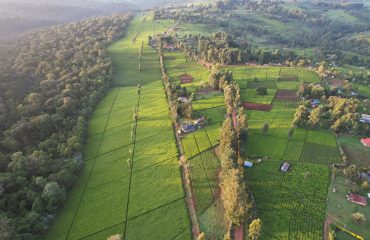
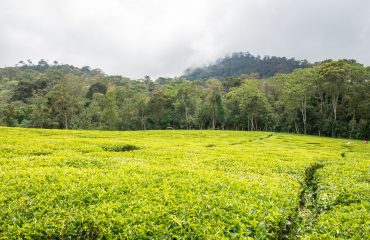
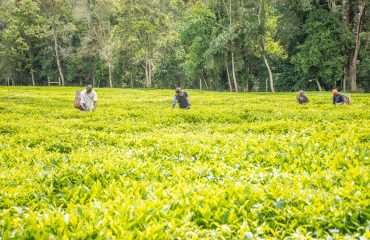
Forests protected by Buffer
975,582 km
Stretch of tree & tea buffer
939 ha
-Inspiring conservation
Verifiably NTZDC works with arguably rural communities who arguably have a strong attachment to the forest as a means for their survival. As the Corporation moves in to protecting the gazetted forest, the government utility navigated this minefield through a team effort all the way, not only from within. The organization has largely been supported by various internal and external stakeholders. That include; the government through the parent ministry which has allowed for the expansion of about about 300kms stretch, up to now 939kms stretch.
Equally, the organization has received overwhelming support from the stakeholders who are the various government agencies who are involved in the conservation mandate, from KFS in streamlining the forest cutline at the buffer belts, the organization team have also largely contributed to the overall success that includes; the board which has clearly given good directions in establishment and undertaking of the conservation efforts.
The robust team of employees who are very passionate with the conservation mandate and have been able to advance the aspect of sustainability and growth. Hence its been as a result of collaborative efforts from various stakeholders, the communities who live along the forest edges, along the conservation belts who have continued to champion our initiatives.
” We wouldn’t have achieved this without the local communities because the local leadership and the adjacent communities have really embraced the work we have been doing and we wouldn’t have done it alone without their support ” acknowledges Mr. Peter Korir- Managing Director NTZDC
-Eco-system management
Co create sync between tea growing which is a peripheral role of the organisation with environmental conservation, which is the organizations core calling, it is important to understand first that tea is a shrub (small tree) and in NTZDC concept it’s being used for conservation as well as sustenance of the buffer belt.
Nyayo tea zones conserve the forest by establishing a 100m buffer belt that consists of three components namely tea, fuel wood and indigenous trees along river valleys and environmentally sensitive areas. The buffer belt is subdivided into zones ranging from 100 to 250ha and further into tea or forest blocks that range from 10 to -20ha.This is done for administrative purposes.
A zone Manager is in charge of both the forest and tea components in the zone while a block supervisor is in charge of either a tea block or forest block. The background of the staff is generally agriculture or forestry.
The managers and supervisors are trained on conservation and the taught the significance of the buffer belt that has both tea and assorted tree species.
The communities are sensitized on their role in the conservation of forest through the establishment and maintenance of the buffer. They are engaged in daily activities of the buffer by providing labour during a buffer establishment, buffer maintenance activities of tea plucking, weeding, tea & tree pruning, security and so on.
“These initiatives create a source of ownership that cascades right through the organization and with our stakeholders”, Notes Mr. Muceke-operations manager NTZDC
To date the NTZDC has registered some seismic achievements in the conservation ecosystem especially in the five water towers found in the country, namely – Mt. Kenya, Aberdares, Mau forest Complex, Mt Elgon, Cherangany Hills, Kakamega Equatorial Forest, Nandi forest and Kaptagat forests – where the tea buffers have been established, allowing the forests in those catchments areas to flourish and to remain intact since there is no encroachment.

